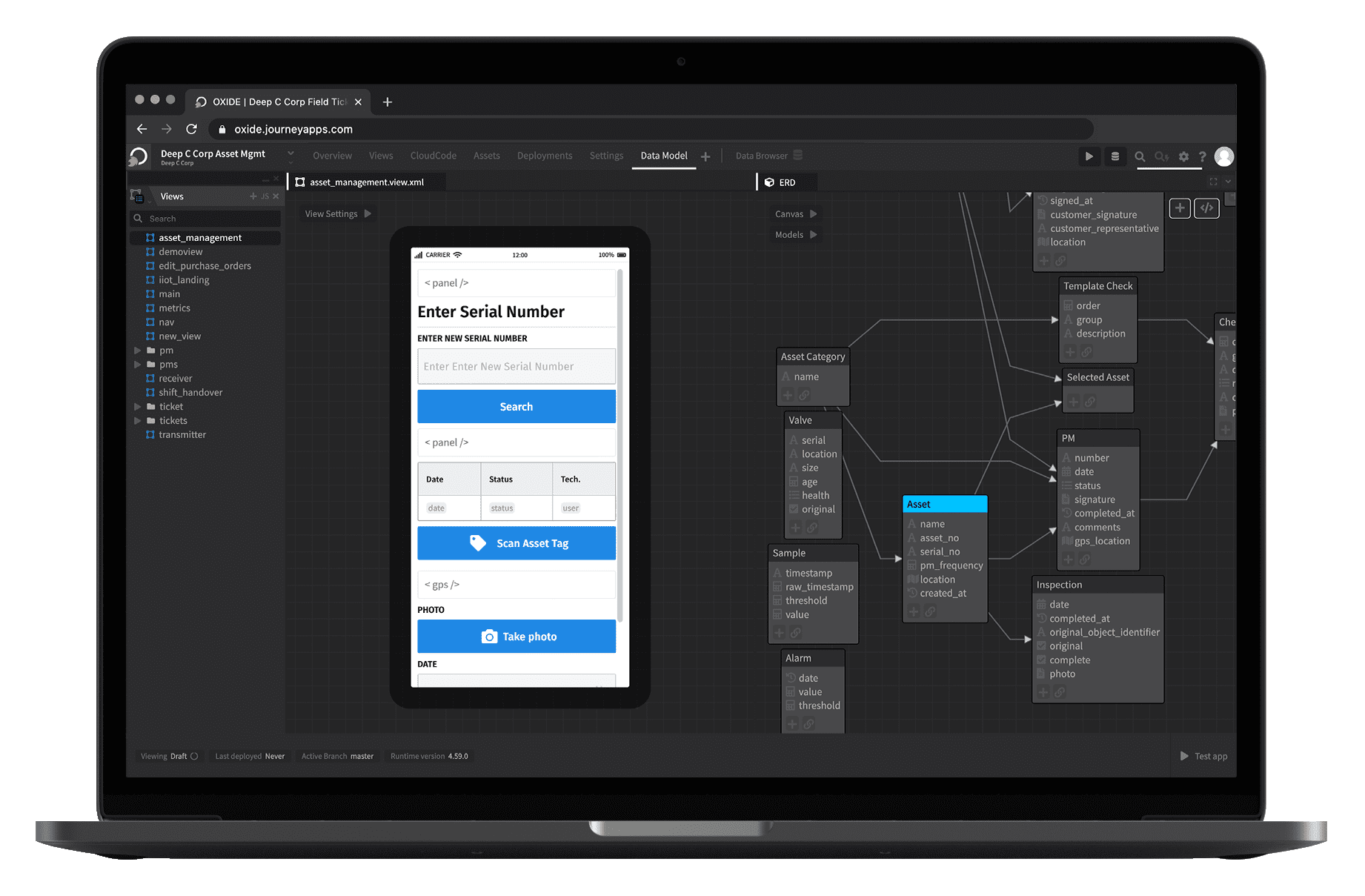 APPS
APPS
 APPS
APPS
 APPS
APPS
Application development company Journey Mobile Inc., better known as JourneyApps, said today it’s getting into the low-code software game with the launch of its new OXIDE Integrated Development Environment.
The company said it’s trying to strike a better balance between the speed and efficiency of low-code software creation with the flexibility and power of traditional code-based development.
The low-code software movement has gained a lot of traction in recent years because it enables developers to create lots of simple but useful apps quickly that can help their business operations. But JourneyApps Chief Executive Conrad Hofmeyr argues that there’s potential for a much higher return on investment for companies building more powerful apps that can address more difficult automation and digitization problems.
“The problem is that when you’re using low-code/no-code platforms and apps become more complex, the visual point-and-click development approach becomes unwieldy and the speed of development slows down dramatically,” he said.
However, he said that information technology teams are often so backlogged with other work that it’s simply not feasible for them to build all the apps their company needs using traditional development tools.
“This is why there is a clear need for an app development platform that allows complex apps to be built primarily with code in a rapid and highly productive way, which is exactly what OXIDE is pioneering,” Hofmeyr said.
The OXIDE platform is a web-based IDE that enables developers to create apps using a combination of visual tools and code, JourneyApps said. Data models and screen layouts can be built using either visual tools or code, while logic is developed with the JavaScript or TypeScript programming languages.
Kobie Botha, chief product officer at JourneyApps, told SiliconANGLE that OXIDE is aimed at software developers, with the main goal of speeding up their workflows. “In one study we commissioned, developers took 9.2 times less time to develop an app on JourneyApps versus developing the same app using traditional development tools,” he said.
With OXIDE, it’s possible to build powerful apps that can run on any kind of operating system, including Android, iOS, Linux, MacOS and Windows, without any additional configuration necessary. Apps built in OXIDE can also run as web apps in a browser, which means they can easily be deployed as a customer portal, for example.
OXIDE also facilitates collaboration since it offers live co-editing features and integrates with the GitHub software repository service.
The live co-editing and GitHub integration in OXIDE also allows developers to collaborate easily in real-time, from anywhere. All apps built on the platform automatically have zero-configuration, secure offline bidirectional data sync, allowing users to work from remote environments without any connectivity.
Early adopters say they’ve used the OXIDE platform to sustain the development of their applications even as their requirements become much more advanced than similar low-code platforms can cater to.
Edge Oilfield Services LLC Director of Innovation and Technology Anthony Licona said OXIDE enables its teams to do much more, with far less knowledge than actual programmers possess. “I’ve used other low-code platforms, and it seems they put much more emphasis on the no-code part of their products than the low-code part, so when you’re using their visual editing tools, your hands feel tied in terms of what you can do,” Licona said. “Then, when you get to the code part, it is just so overly complex that it stands in stark contrast to the visual editing.”
Support our open free content by sharing and engaging with our content and community.
Where Technology Leaders Connect, Share Intelligence & Create Opportunities
SiliconANGLE Media is a recognized leader in digital media innovation serving innovative audiences and brands, bringing together cutting-edge technology, influential content, strategic insights and real-time audience engagement. As the parent company of SiliconANGLE, theCUBE Network, theCUBE Research, CUBE365, theCUBE AI and theCUBE SuperStudios — such as those established in Silicon Valley and the New York Stock Exchange (NYSE) — SiliconANGLE Media operates at the intersection of media, technology, and AI. .
Founded by tech visionaries John Furrier and Dave Vellante, SiliconANGLE Media has built a powerful ecosystem of industry-leading digital media brands, with a reach of 15+ million elite tech professionals. The company’s new, proprietary theCUBE AI Video cloud is breaking ground in audience interaction, leveraging theCUBEai.com neural network to help technology companies make data-driven decisions and stay at the forefront of industry conversations.